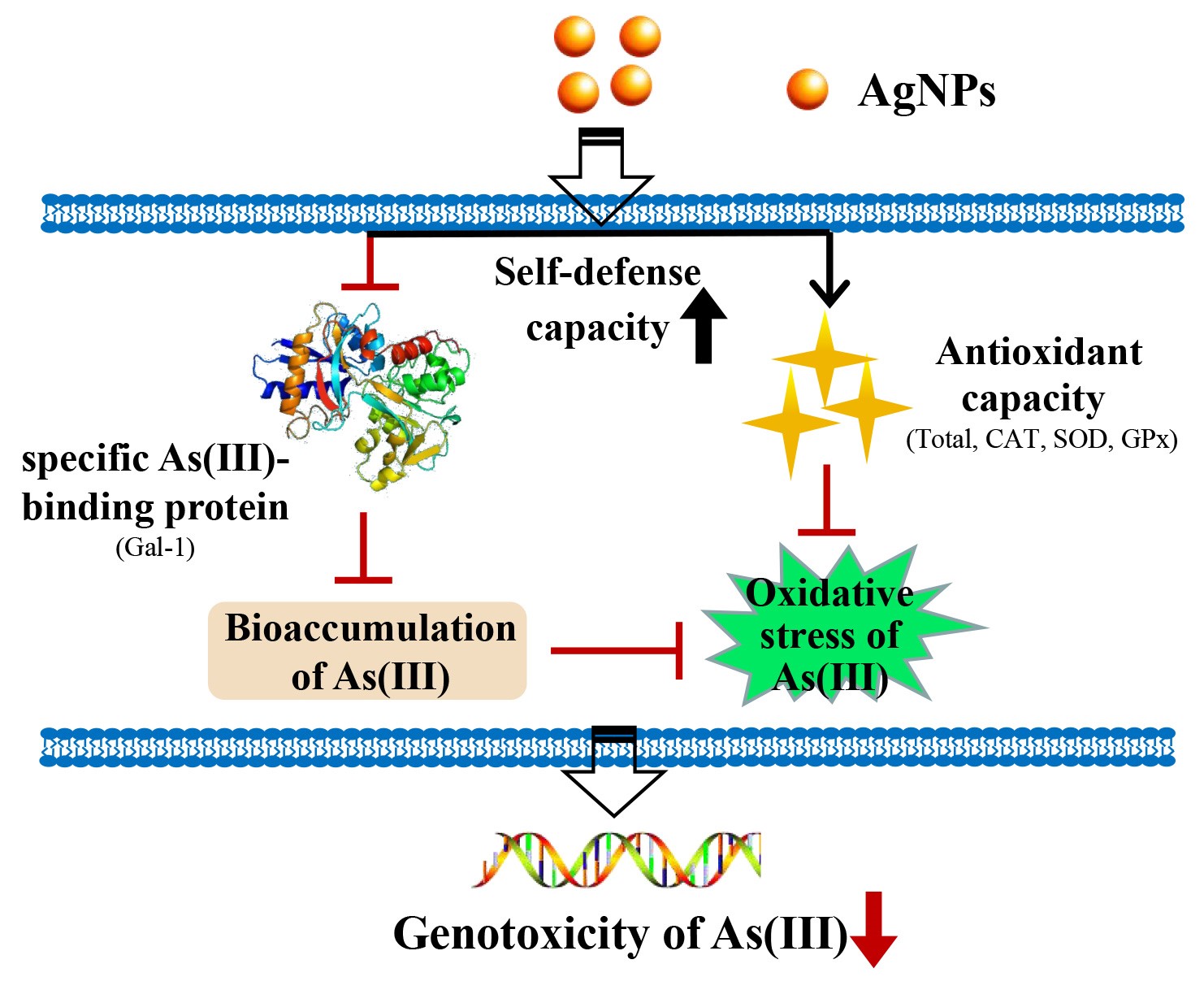
Recently, researchers led by Prof. XU An from the High Magnetic Field Laboratory of the Hefei Institutes of Physical Science (HFIPS) reported their new findings about silver nanoparticles (AgNPs). It's proved that, at non-toxic concentrations, the material can protect against arsenic induced genotoxicity by attenuating arsenic (As) bioaccumulation and elevating anti-oxidation in mammalian cells.
As one of the most toxic inorganic pollutants, As has been classified as Group I carcinogenic agents for skin and several types of internal cancers by the International Agency for Research on Cancer (IARC). 2,3-dimercaptopropanol (BAL), meso-2,3-dimercaptosuccinic acid (DMSA) and sodium 2,3-dimercapto-1-propanesulfonate (DMPS) are the most commonly used antidotes for As poisoning in the current clinical treatment. However, these are non-specific antidotes and have adverse side-effects in the therapy. Therefore, a novel, efficient and safe approach is urgently needed to be developed to attenuate As-induced hazardous effects.
Considering the role of nanomaterials, stimulated self-defensing ability in maintaining the homeostasis may open up new possibilities for biosomes to actively resist to the toxic effects induced by As.
In this study, scientists investigated the protective effects of AgNPs, which are the most widely used nanoproducts in biomedical field, on As induced genotoxicity and the underlying mechanism.
"This was an exciting experiment to be a part of,"said WANG Xue, member of this team,"γ-H2AX is marker of nuclear DNA double strand breaks, and our data showed that AgNPs pretreatment significantly inhibited it and the mutation frequencies induced by As."
"On one hand, the intracellular accumulation of As in mammalian cells was declined by AgNPs via suppressing the expression of specific As-binding protein (Gal-1)," she added, "on the other hand, the activities of antioxidant enzymes were greatly up-regulated by AgNPs". These eventually inhibited the generation of reactive oxygen species (ROS) induced by As and the downstream stress-activated protein kinases/c-Jun amino-terminal kinases (SAPK/JNK) signaling pathway.
Their results proved that AgNPs dramatically suppressed the genotoxic response of As in mammalian cells via decreasing As bioaccumulation and elevating intracellular anti-oxidation, which might provide a new clue for AgNPs’ applications in As detoxification.
This work was supported by National Natural Science Foundation of China grants, Youth Innovation Promotion Association of CAS and Anhui Provincial Key R&D Programs.
Link to the paper: Silver nanoparticles protect against arsenic induced genotoxicity via attenuating arsenic bioaccumulation and elevating antioxidation in mammalian cells

Schematic diagram of the mechanisms involved in antagonizing As-induced genotoxicity by AgNPs (Image by WANG Xue)
Contact:
ZHAO Weiwei
Hefei Institutes of Physical Science (http://english.hf.cas.cn/)
Email: annyzhao@ipp.ac.cn